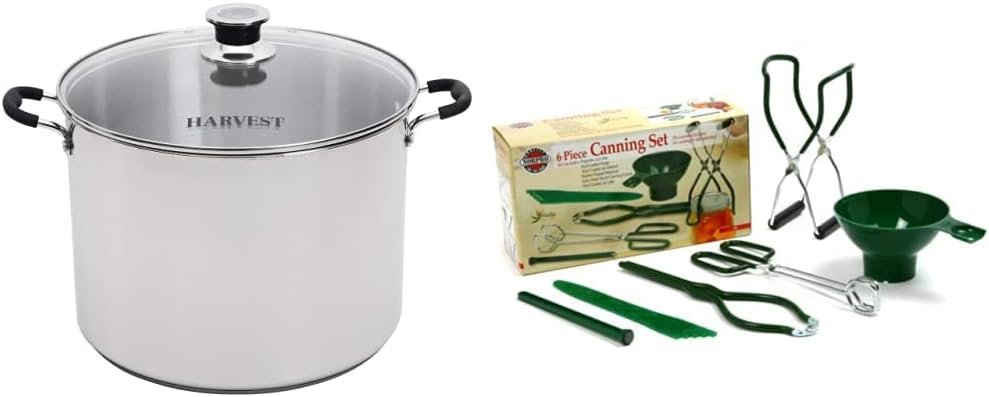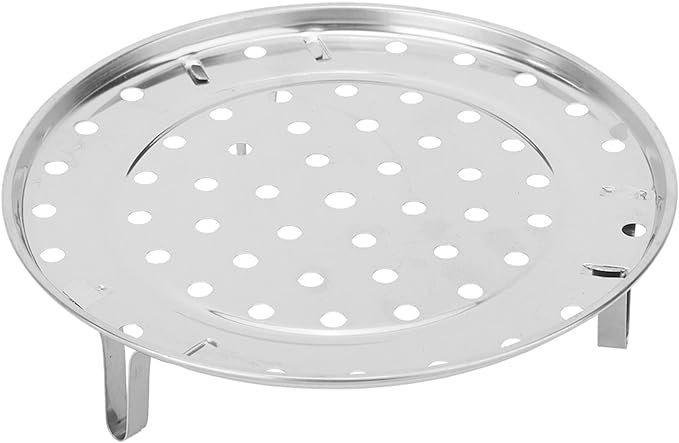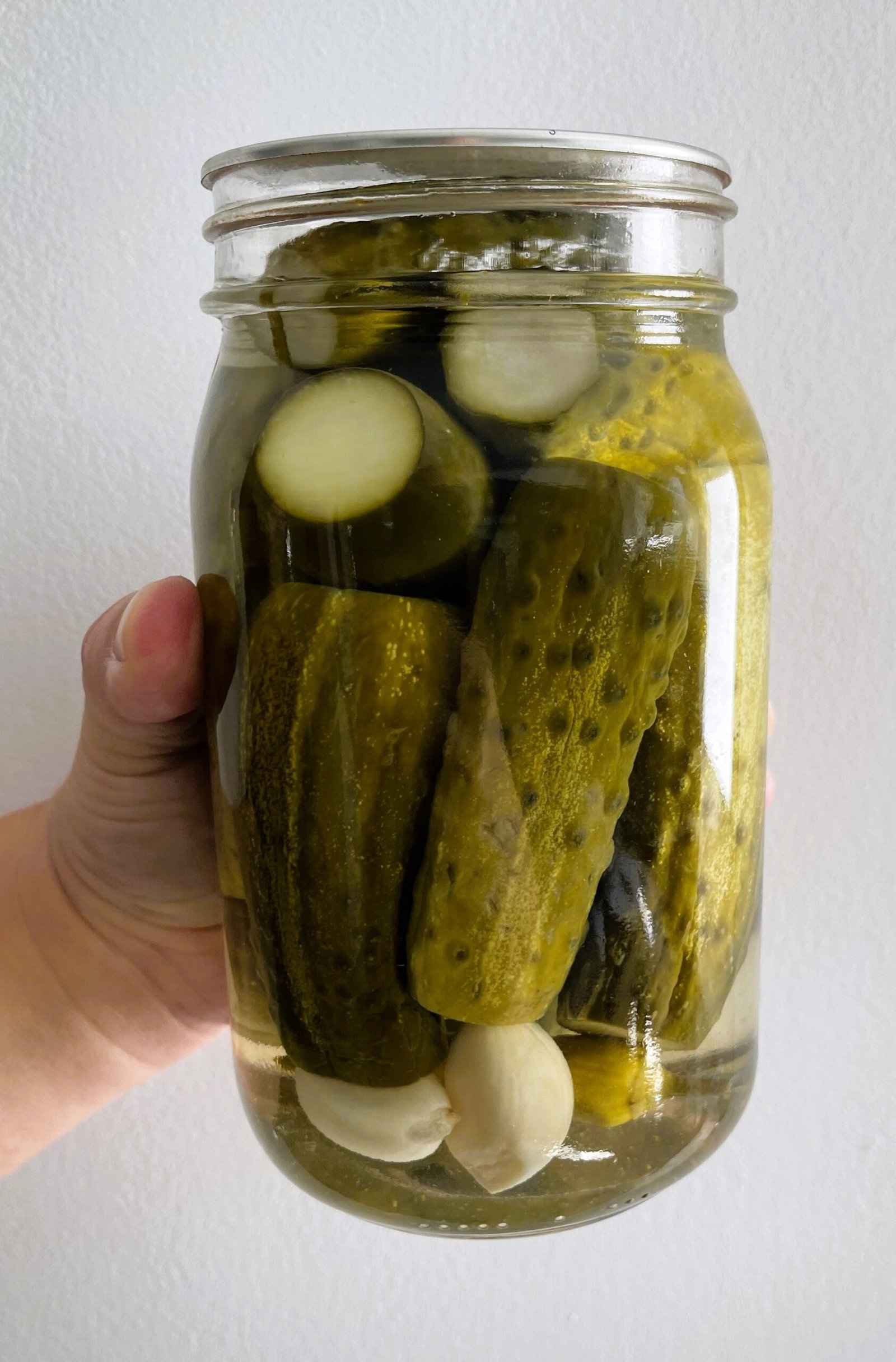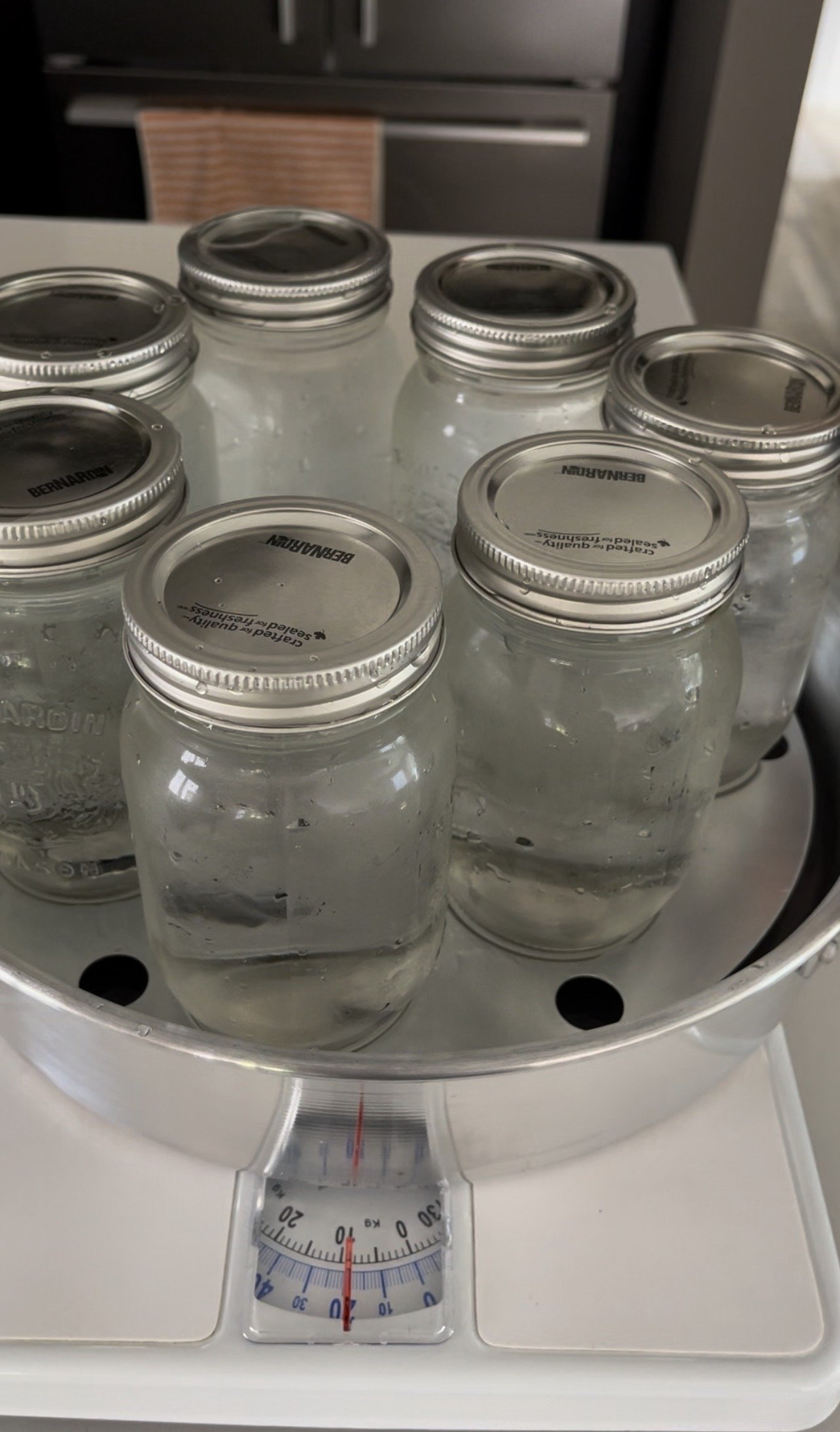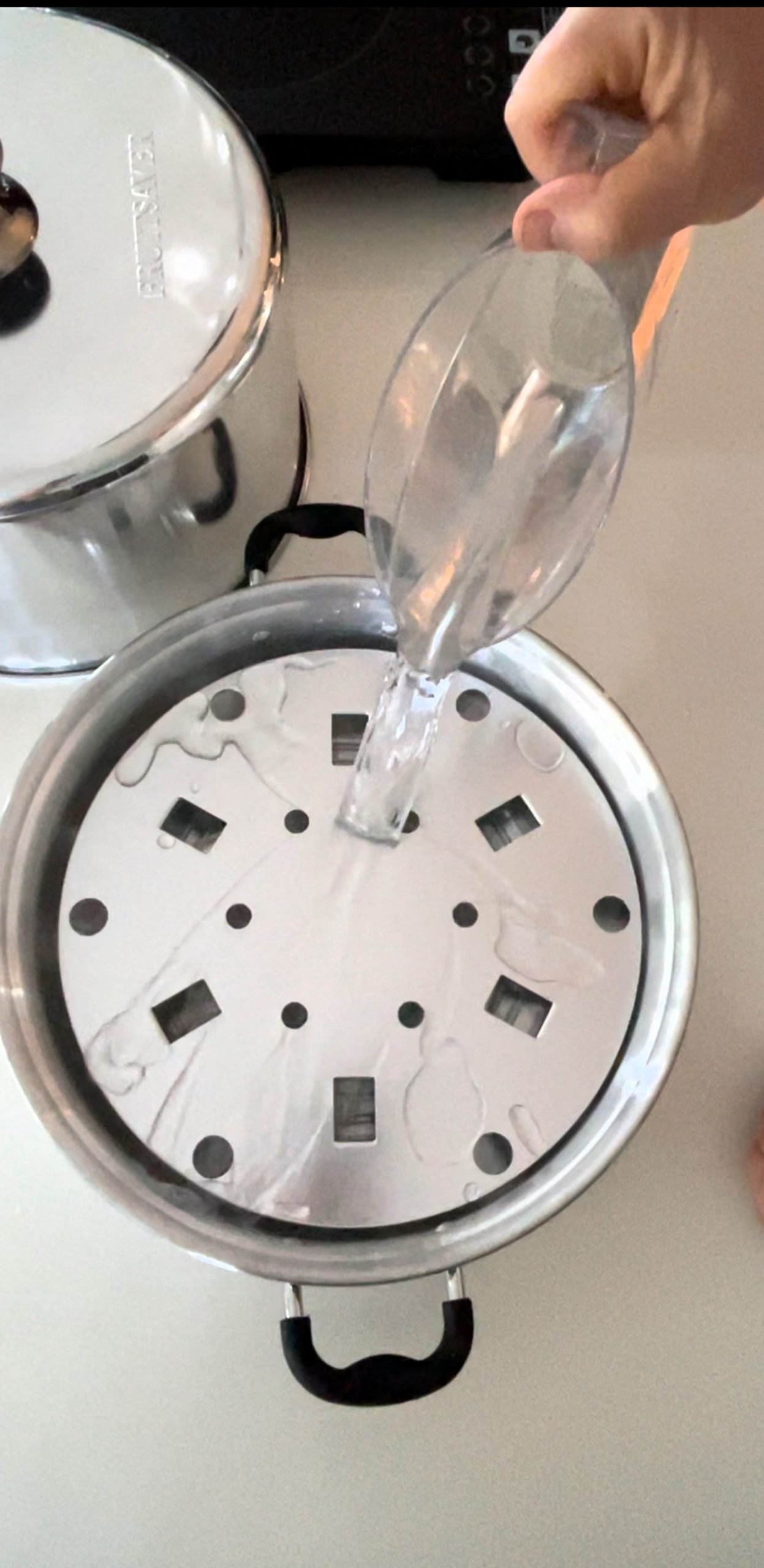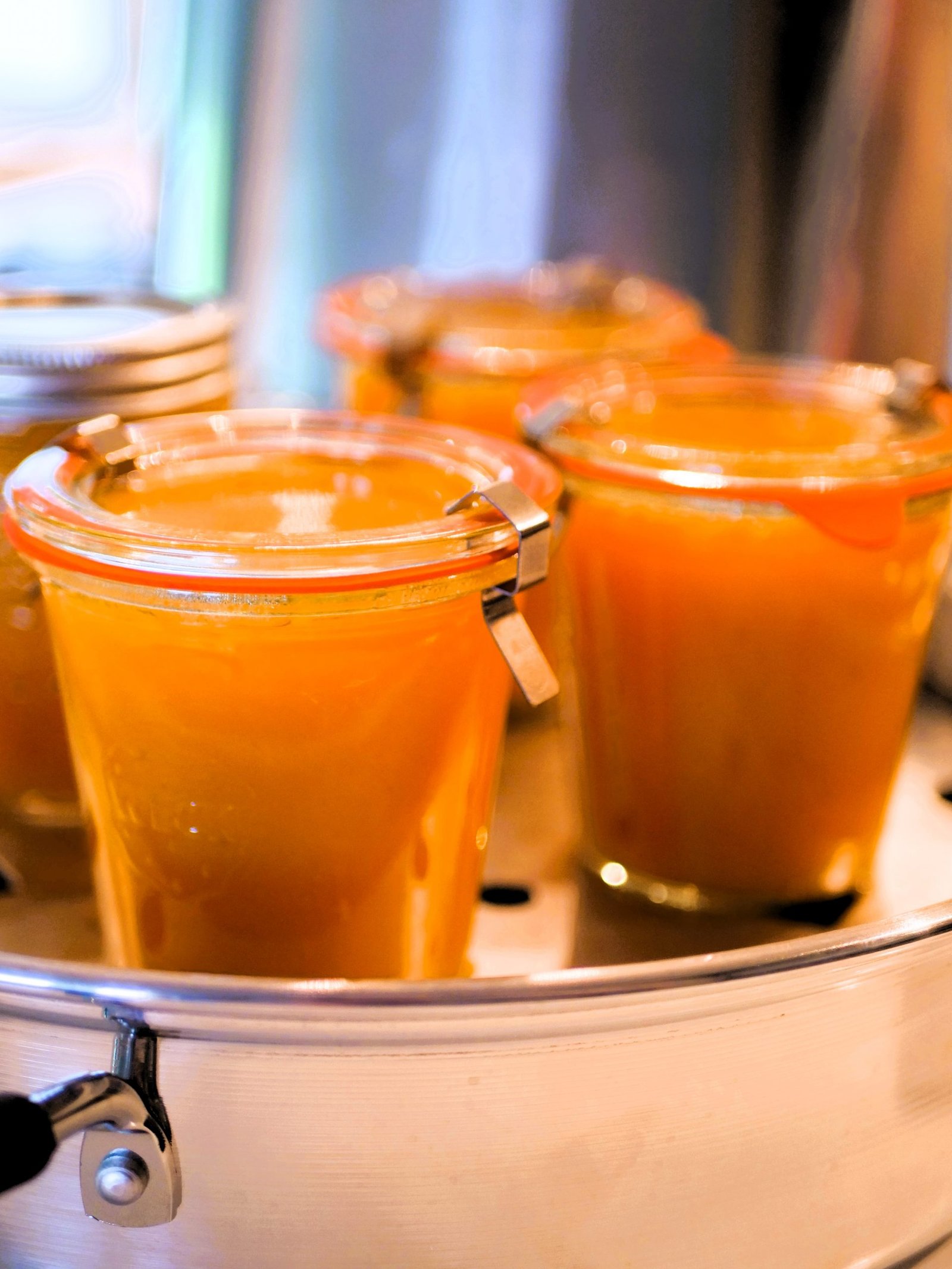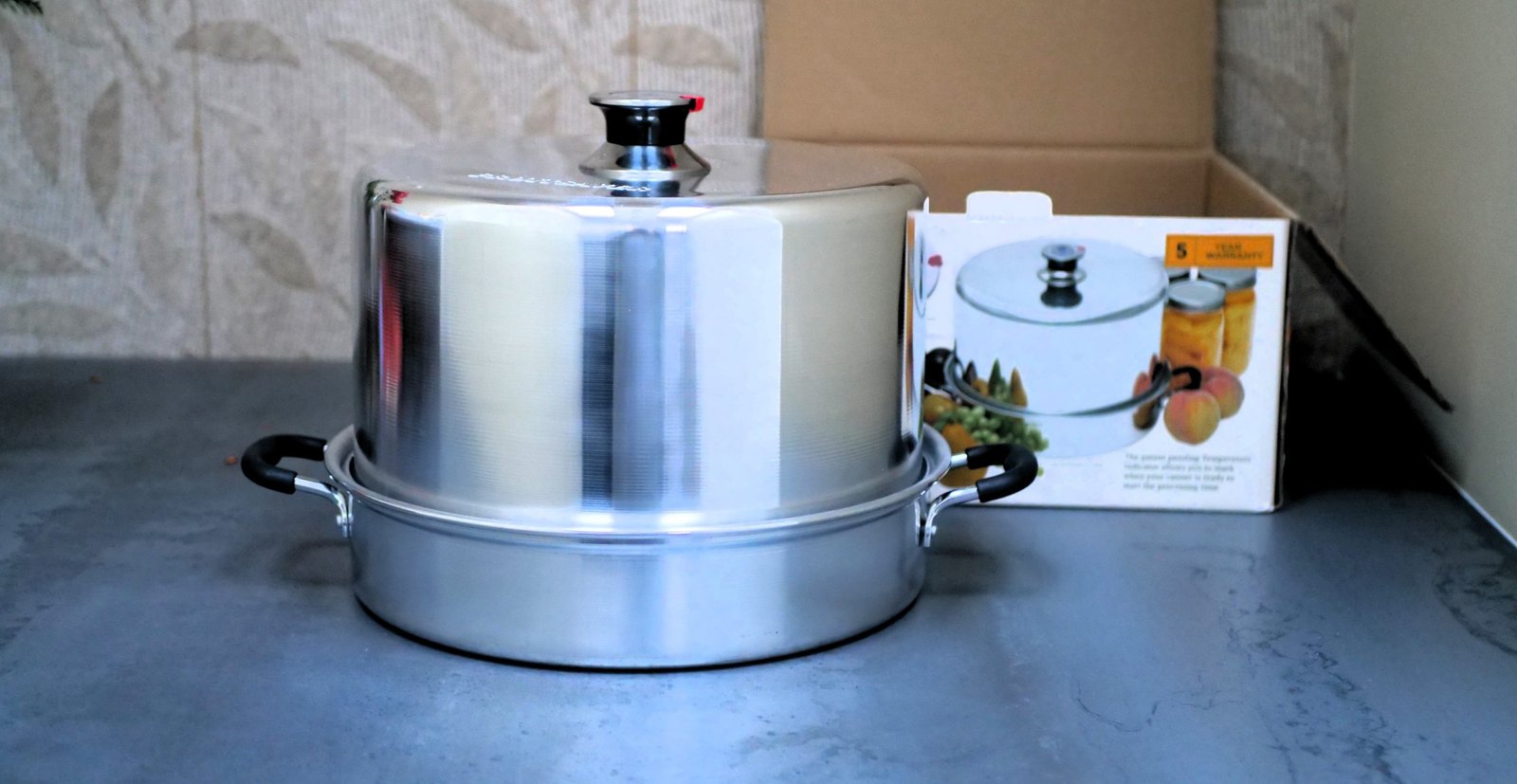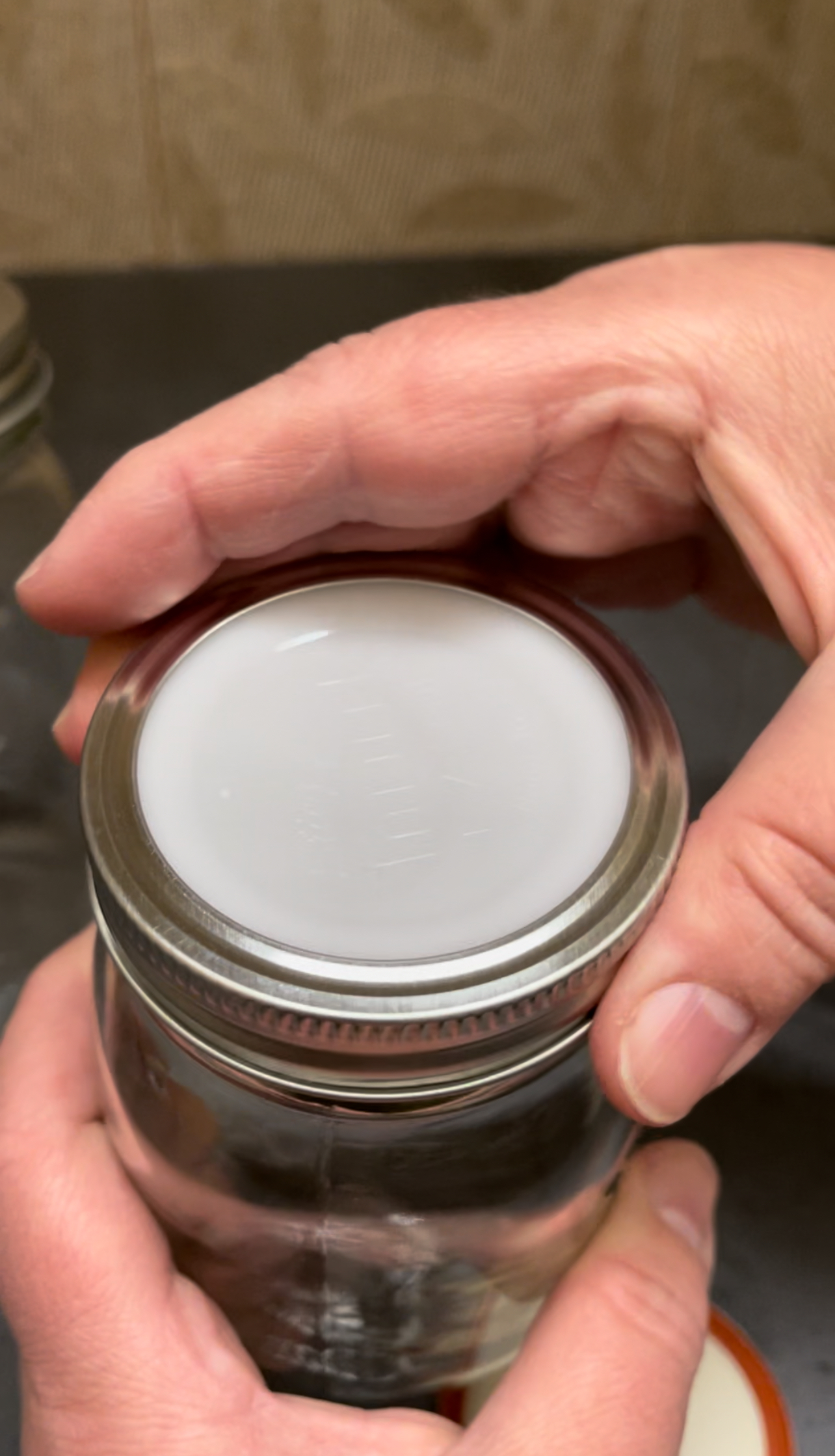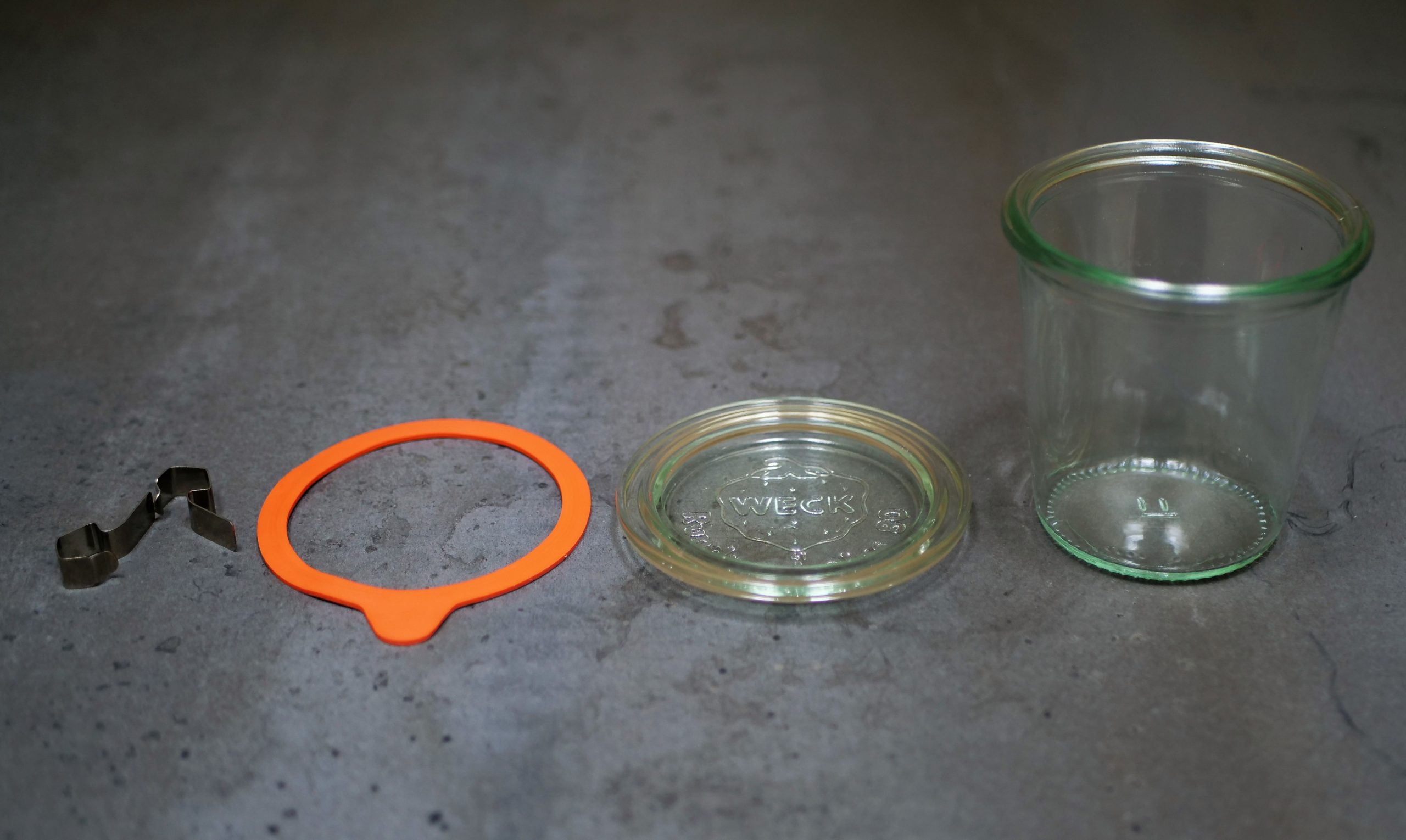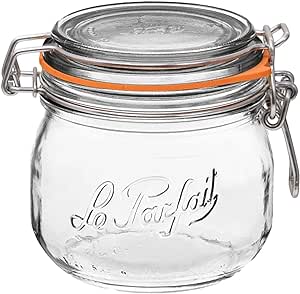A Beginners Guide To Steam Canning: All You Need To Know About Steam Canning At Home
Views: 332
Are you an experienced canner curious about trying steam canning as an alternative to boiling water bath or other canning methods you’ve used? Or maybe you’re a novice canner intimidated by water bath canning and looking for easier ways to can. Perhaps you’re just looking for more information about specialty pots designed for this canning method. No matter what your situation is, we’ve got the answers you need!
But first, let’s clear up some confusion: atmospheric steam canning and steam canning are the same thing. However, atmospheric steam canning and pressure canning are very different.
What is atmospheric steam canning?
Atmospheric steam canning is a way to preserve food in glass jars using steam at normal pressure (atmospheric pressure). This is different from pressure canning, which uses high pressure. This canning method is only suitable for high-acid foods like fruits, pickles, and jams.
In simple terms, this canning method involves placing jars filled with food in a steam canning pot and creating an environment of hot steam around the jars. The steam transfers heat to the jars, ensuring the contents reach a temperature sufficient to kill most bacteria, yeasts, and molds.
Atmospheric steam canning has been tested by many American university extensions and proved to be safe and reliable. However, it might take some time before the USDA officially includes it in their guidelines.
In this post, we’ll focus on atmospheric steam canning and the equipment you’ll need to do it at home.
How does steam canning work?
Steam canning is a fast and simple way of preserving high-acid food. Here are the key steps:
- Prepare and Pack: Start by preparing your food and packing it into jars. You can use either the hot-pack or raw-pack method.
- Preheat the Water: For raw-packed foods, preheat the water in your steam canner to 140°F (60°C). For hot-packed foods, preheat the water to 180°F (82°C).
- Place Jars in the Canner: Place the jars with food on a canning rack above the preheated water in the canning pot. Close the pot with a lid. A lid must have a steam vent or valve to work for this method.
- Bring Water to Boil: Bring the water inside the canner to a boil. Once it starts boiling, begin timing the canning process.
- Process the Jars: The boiling water creates steam that surrounds and heats the jars. Steam the jars for the period of time specified in your recipe.
- Cool-Down Period: Once the processing time ends, turn off the heat and let the jars sit in the canner for an additional 5 minutes. This cool-down period is crucial to ensure the contents are properly processed.
- Remove Jars and Cool: Remove the lid and carefully lift the jars out of the canner. Allow them to cool for 12-24 hours, just like you would with other canning methods.
Steam canning vs. water bath canning
The two canning methods might seem different, but they are actually quite similar in many ways.
Temperature:
Both methods use a temperature of 212°F (100°C). This is the boiling point of water and the temperature of steam at atmospheric pressure.
Process:
In both methods, you place the food in jars and process them at 212°F (100°C).
Types of Foods:
Both steam canning and water bath canning are approved for preserving high-acid foods only, like fruits, pickles, and jams.
Interchangeable Recipes:
The recipes and time charts designed for water bath canning also work for steam canning. There’s no need to adjust ingredients or processing times.
Even though the equipment and some specifics differ, steam canning and water bath canning are very much alike when it comes to preserving your high-acid foods safely and effectively.

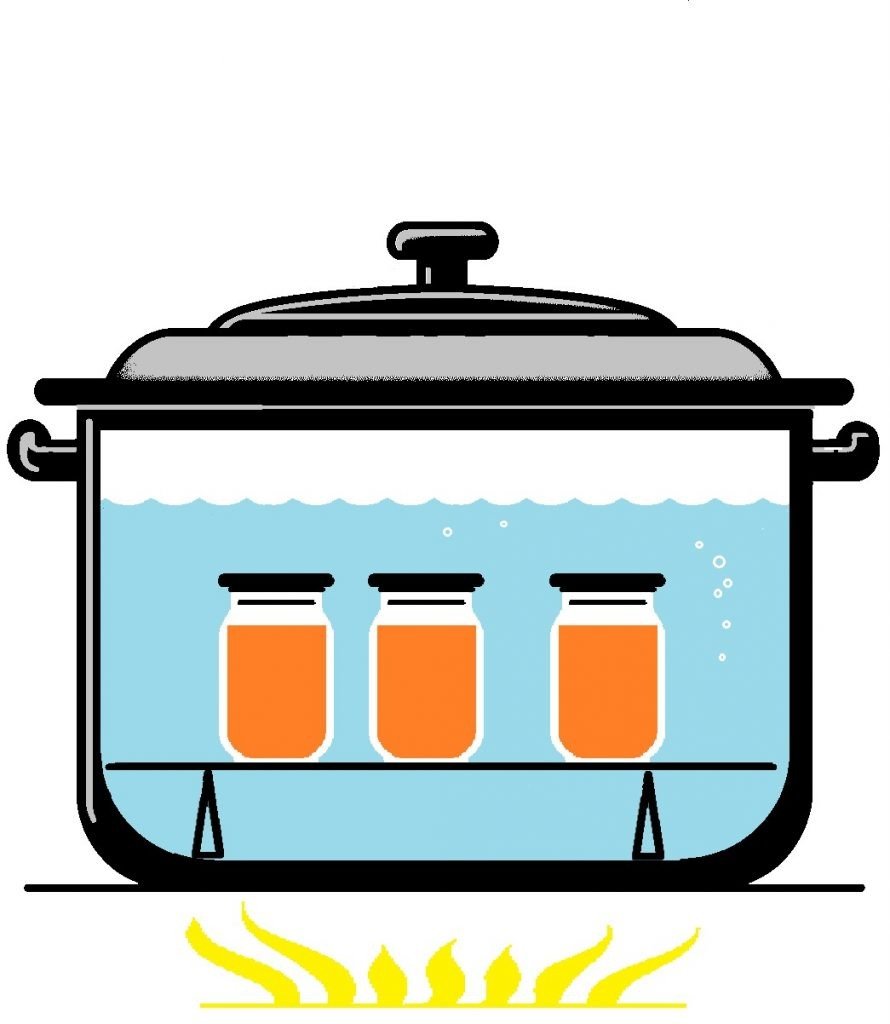
Atmospheric steam canning vs. pressure canning
While atmospheric steam canning and pressure canning are both methods used for preserving food, they have significant differences in their processes, equipment, and the types of foods they can safely preserve. In summary, these are the key differences between the two methods:
STEAM CANNING
PRESSURE CANNING
Temperature and Pressure:
Operates at atmospheric pressure with a temperature of 212°F (100°C).
This method requires much higher pressure and reaches temperatures of 240°F (116°C) or higher. The high temperature is necessary to kill Clostridium botulinum spores, which are capable of surviving at boiling temperatures
Types of Foods:
Suitable for high-acid foods like fruits, pickles, and jams.
Used for low-acid foods like low acid vegetables, meats, and seafood, all of which need higher temperatures for safe preservation.
Equipment:
Lightweight pots with non-locking lids, often made of aluminum.
Heavy-duty pots with locking lids and gauges to monitor the pressure.
In general, these are two very different canning methods. Don’t let anyone confuse you by conflating the two.
Specialized steam canners and where to buy them
As of now, there is only one manufacturer in America that makes specialized steam canners: VKP Brands. They have three types of canners that you can purchase directly on Amazon.
First, there’s the Harvest Multi-Use Canner. It’s super versatile because its canning rack allows you to use it for both canning methods. So, if you want a pot that can do double duty in your kitchen, this one might be perfect for you.
Then, there’s the Fruit Saver Steam Canner. It’s made specifically for steam canning. It doesn’t look like your typical canner; It looks more like a fancy restaurant cloche than a sturdy canner. Plus, it’s made of lightweight aluminum, which is different from most canners. Looking for something made of a sturdier material? VKP brands company makes this same canner of a stainless steel. It is sold under a brand name Kitchen Crop. It looks and functions exactly like Fruit Saver Steam Canner but costs about $20 more because of the material they use to manufacturer this canner.
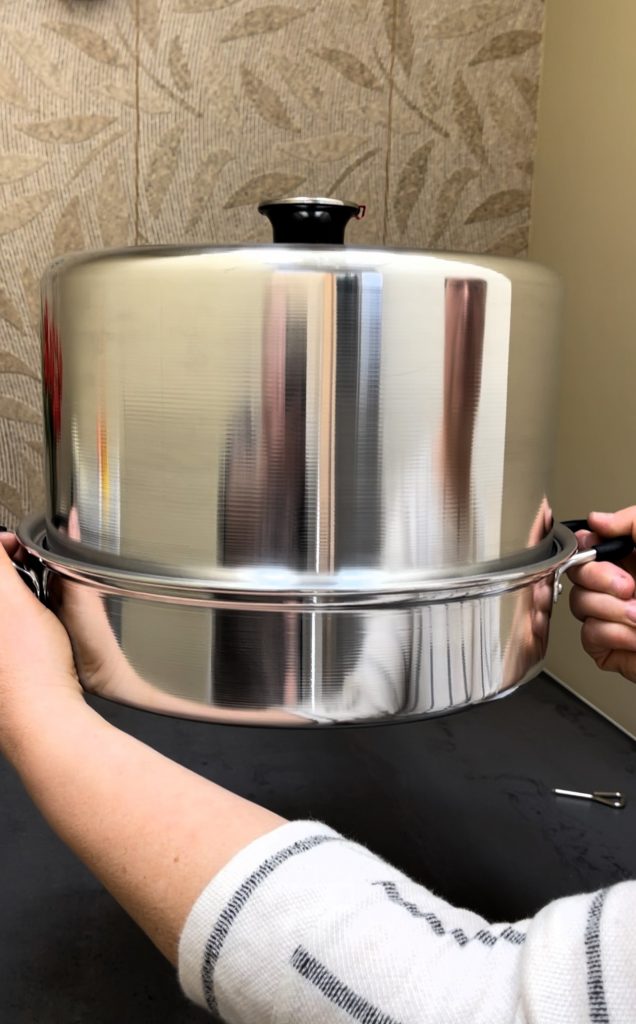

We own a Fruit Saver Steam Canner and use it regularly for our preserves. If you’ve seen our videos, you’ve probably seen us using this tool. If you’re thinking about buying one, check out our previous article, where we detail what to expect when you buy this handy gadget.
Both canners can hold up to 8 pint jars (500 ml jars) or 7 quart jars (1 liter jars). A key feature of VKP canners is the temperature indicator with a moving needle inside the knob. This indicator shows when the water or steam inside the canner has reached the necessary temperature for canning.
While you might occasionally find steam canners from obscure brands on Amazon, VKP is the only brand that includes a temperature indicator on both of their canners.
How to do atmospheric steam canning without a specialized canning pot
Believe it or not, you don’t need to spend extra money on a special canning pot. If you’re trying to save money or space in your kitchen, you can use a regular stock pot in a clever way. Here’s how:
1. Use a steamer, like this one.
2. Assemble your own: If you already have a large stock pot, you’re halfway there. Next, find the matching glass lid that has a steam vent. This lid is important because you need to see when the water starts boiling. You’ll also need a steaming rack that fits inside your stock pot. This rack keeps your jars elevated above the boiling water. To assemble your steam canner, place the steaming rack inside your stock pot. Then, cover the pot with the vented glass lid. The vent in the lid allows steam to escape, which is critical for steam canning. That’s it! You are ready to do steam canning!
Safety tips
The main safety concern when using this canning method is the risk of burns from hot steam. Here’s how you can stay safe:
- Watch Out for Steam: Steam from a steam canner can be very hot, especially when the water is boiling. Always make sure the steam vent is facing away from you to avoid burns.
- Handle with Care: When you need to remove the lid from the canner, tilt it away from you to prevent steam burns.
After each batch, it’s crucial to check the water level in your canning pot. Letting the water pan boil dry can cause serious damage to your canner. VKP brands even explicitly warn against using their canners without water, saying that doing so can render their gadgets unusable. Not only that but using the steam canner without water can also damage your stovetop. So, keep an eye on the water level in the canner to avoid any mishaps.
Recipes for steam canners
You can use any recipes designed for water bath canning without making any changes to the ingredients, amounts, or time charts when you look for canning recipes to make in your steam canners. This is because the science behind boiling water bath canning and steam canning is the same.
However, remember that steam canners can only be used for recipes where the processing time does not exceed 45 minutes. This limitation is due to the shallow water pans used in these canners. If you run your steam canner for over 45 minutes, you risk the water pan boiling dry, which may damage both your canning pot and your stove. While we haven’t experienced this issue, we’d like to make sure that you are aware of this limitation.
Times charts for steam canners
As mentioned earlier, there’s no difference in processing time between steam canners and water bath canners. The time charts provided in recipes designed for water bath apply “as is” to steam canning. So, you can follow the same processing times for without any adjustments.
Steam canning tips and tricks
- Be Careful with Steam: The steam coming from the canner is very hot. Make sure to point the venting hole away from you to avoid getting burned.
- Adjusting the Heat: Start with the heat on high to get the water boiling and steam flowing. Once you see a continuous column of steam, lower the heat. You want to make sure that the water continues to boils, but it doesn’t have to boil vigorously. This stops the lid from rattling and lifting. Additionally, this makes the water last longer.
- Using Gas Burners: The manufacturer of the Kitchen Crop steam canner made this line of canners with lightweight aluminum. We were worried that using it on a gas burner might warp the canner, but it held up just fine. If you are using VKP brands stainless steel canner, or using your own stainless steel pot with a steaming inset, this wouldn’t be a concern for you.
- Induction Cooktops: A number of these specialized canners don’t work with induction cooktops. When we tried using our FruitSaver on the induction cooktop, it gave us an error and shut off. Obviously, if you are using a specialized canner or a stock pot designed to work with induction cooktops, this would not be a concern for you. Always find out if your specialized canner will work with your cooktop type before buying it!
- Glass Cooktops: The VKP brands manufacturer advises against using their canners on glass cooktops because it might scratch the surface. We haven’t tested this ourselves, but it’s good to know.
- Preventing Damage: Never run the canner dry. Always fill it to the fullest level with water, no matter how long you need to process your preserves. Running it dry can damage the canner.
- Jar Types: You can use ¼-pint, ½-pint, pint, or quart jars with this canner, but always use preheated warm jars.
You may also like:
-
How to clean and preserve suillus and bolete mushrooms
Foraging wild mushrooms is a satisfying, time-honoured pursuit. But once you bring home your bounty, how do you clean and preserve them? Let us walk you through exactly how we clean spongy-pored wild mushrooms like boletes and suillus, and then show you, step-by-step, how to dry or freeze them for future meals.
-
How To Make Crispy Pickles Without Pickle Crisp Or Lime Solution
Here’s the irony, many of us start making pickles at home because we want better, fresher, healthier pickles. But next thing that some of us do, is reach for a jar of Pickle Crisp, a manufactured chemical marketed as the magic fix for crunchy pickles. Others swing the other way, and dunk their cucumbers in…
-
Don’t Just Buy Granite Canner, Do This Instead
Before you buy a granite water bath canner, read this first. Not all granite canners are created equal, and you might not even need one! We’ll tell you how to turn your stockpot into a DIY canning setup and why investing in a high-quality pot is key if you want a durable canner that lasts.
-
A Better Canning Method Than Water Bath Canning? We Think So!
Looking for a better way to preserve your summer bounty without breaking a sweat or lugging a bathtub-sized water bath canner? We’ll tell you how. It’s more than just temperatures and jar lifter dramas—think saving water (even babies get baths with less!) and saying goodbye to floating jams. Ready to upgrade your canning game?
-
VKP Fruitsaver Steam Canner Review: Helping You To Buy Better
We put the VKP Fruitsaver Steam Canner to the ultimate test in our canning kitchen, and now we’re spilling the beans! Is it a kitchen champion or a canning flop? Is it worth your money? Find all the answers in our unbiased review before parting with your cash!
-
A Beginners Guide To Steam Canning: All You Need To Know About Steam Canning At Home
Steam canning, also known as atmospheric steam canning, is a simple and efficient method for preserving your jam, jellies, pickles and more. Find out how it works and why it’s a great option for home canners. Learn about the types of steam canners available and how to do steam canning with and without specialized pots.
-
How To Assemble And Use Victorio Steam Canner
Want to try steam canning? Thinking about getting the Kitchen Crop steam canner, formerly the Victorio steam canner? Don’t buy just yet—read this first and make sure you’re fully prepared before making your purchase!
-
How To Use Tattler Reusable Lids And Rings For Home Canning
Concerned about pricey canning lids and considering reusable options? Then you must have heard about Tattler reusable canning lids. Come along as we explore their cost, safety, and functionality. Get ready for some nifty sealing and canning tips too! Let’s uncover the facts together to see if these lids are for you!
-
What Are The WECK Jars, And How To Use Them For Canning
Discover the world of WECK jars and their use in canning. Learn why these German-made glass jars are always in style and hold great resale value! Our guide covers everything from unboxing and assembly to canning with WECK jars and more!
-
All You Want To Know About Reusing Canning Lids and Jars
As the saying goes, often what you can do, you shouldn’t. This applies to reusing canning lids and jars. Yet, there are exceptions. That’s when we say, “yes, you can reuse” Discover which jars and lids are safe for reuse and which ones aren’t.


